Rise and fall of Jarryd Hayne: How Parramatta Eels signed a future star for $1000
The man who spent 30 years at Parramatta and signed Jarryd Hayne to a $1000 deal likened the 15-year-old to as close to Brett Kenny as he has seen. Bonus subscriber podcast.
Eels
Don't miss out on the headlines from Eels. Followed categories will be added to My News.
To comprehend the talent and brilliance while deciphering the enigmatic decline of Jarryd Hayne as an icon of Australian sport, there’s really only one man’s opinion that counts.
Kevin Wise, the man who first signed Hayne in the lounge room of his famous father Manoa Thompson’s home to a Parramatta contract worth $1000, spent more than 30 years with the Eels.
“I rate him so close to Brett Kenny, it’s not funny,’’ Wise says matter-of-factly.
Except for club house janitor or NRL head coach, Wise filled almost every position within the powerful western Sydney club between 1984 until his retirement in 2014.
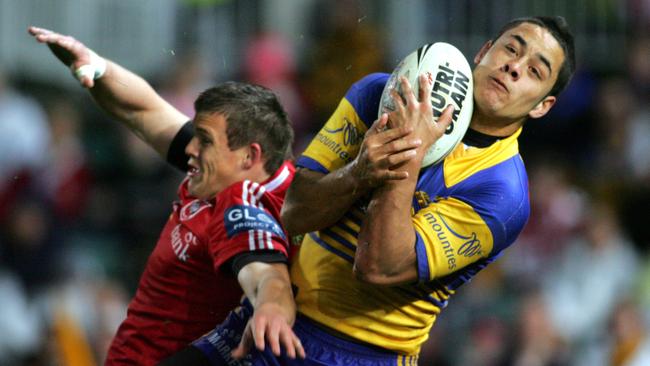
Before retiring from his final role as the Eels recruitment and welfare officer, Wise even mowed the club training fields at Parramatta Marist — a job he would pass onto a teenage Hayne, much to the young star’s chagrin.
By the end of his 30-plus years at the Eels, Wise had worked in marketing selling season tickets, coached the junior representative SG Ball and Harold Matthews teams, compiled annual reports, booked game-day buses and billeted young players from the bush, including future Test players Jamie Lyon and Andrew Ryan.
Wise saw them all, the Eels’ greatest-ever players; Sterling, Cronin, Grothe, Hindmarsh, Price and Kenny.
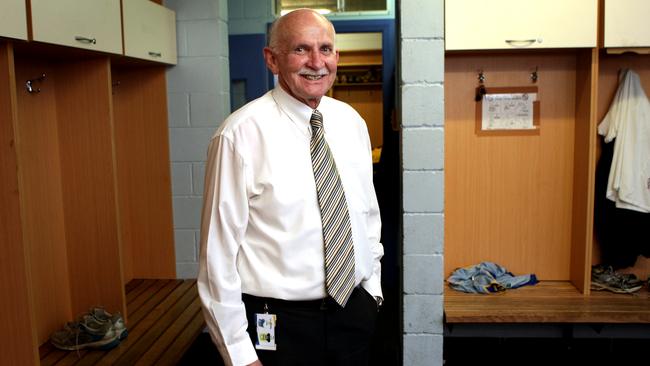
Before “The Hayne Plane”, there was Kenny.
In the blue-and-gold eyes of many Parramatta fans, Kenny stood above – if only marginally – his legendary teammates, as the most gifted.
Inducted into Rugby League’s Hall of Fame, Kenny is inseparably tied to the Parramatta juggernaut of the early 1980s.
The Eels broke pointscoring records and dominated the NSWRL premiership with four grand final victories between 1981 and 1986.
Kenny’s ability to read the play was sublime, with subtle acceleration, sidestep and dummy, the five-eighth crossed for 21 tries in the 1983 season.
In 1985, after helping Wigan to win the 1985 Challenge Cup final, Kenny was acclaimed the best player in league history by Great Britain’s champion centre, Billy Boston.

So when the most obvious question of Hayne’s standing in the blue and gold jersey is posed to Wise, he doesn’t so much as hesitate.
“Brett Kenny they called ‘The Natural’ – and that’s exactly what Jarryd was. Just natural,’’ Wise said.
“Seeing the things that Brett did for so long, I thought he was the best, but individually he (Hayne) could dominate a game just as much.’’
It was Wise who found Hayne as a 15-year-old playing on an oval in Cabramatta, 30km south west of Sydney, at the Australian Schoolboy championships in 2002.
How every other rugby league scout in Australia failed to identify the young Hayne that day is both baffling and embarrassing.
Because as Wise still remembers; “He did something I just didn’t think was possible.’’
“He had moved to five-eighth, he was 40 metres out from the opposition tryline and he put up a bomb.
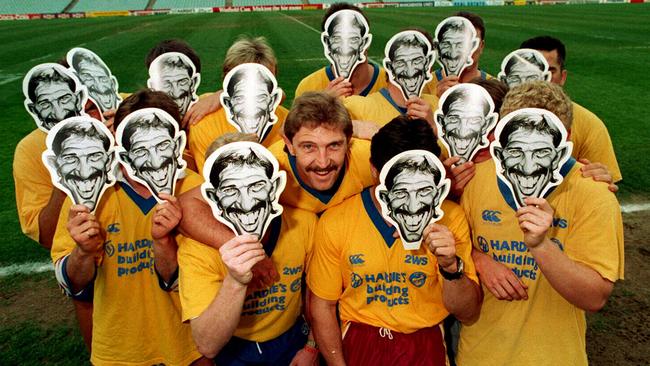

“Remember he was only 15.
“And yet he ran through, leapt above the goal line, right beside the post, flew over the top of everyone else and scored the try.
“I thought; “That is just unbelievable.
“But then I started to watch him really close.
“Everything he did, it didn’t matter where it was on the field, he was always capable of anything.’’
Wise made the decision there and then to sign Hayne.
“I caught up with his dad, Manoa (Thompson) and said we were interested in signing him,’’ Wise said.
“I don’t think anyone else was really interested at all. I wasn’t aware of anyone else that wanted to sign him.
“I signed him to a $1000 contract with some incentives if he played junior representative footy.’’
The contract represents the dreamy opening chapter in Hayne’s colourful career.
But in many ways, that letter of offer from the Eels, was also Hayne’s golden ticket out of the gritty housing commission suburbs of southwest Sydney that he and his mother Jodie had shared in Minto.

“I remember walking through (Minto) one time and I was just like, ‘Man, this is s**t … why am I here?’” he told Karl Stefanovic in a Sixty Minutes interview in 2016.
“It just didn’t make no sense … I was like, you know, ‘I hate this life’.”
“It was a motivator as well.
“I wouldn’t have been the athlete I am today, wouldn’t have been as good, wouldn’t have been as talented, if I didn’t come through here (Minto).
“I wanted to give Mum a house and I think, you know, for me, the only way I could do that was rugby league.
PODCAST BONUS: THE RISE AND FALL OF JARRYD HAYNE
“Rugby league became my everything. It became my oxygen because I didn’t have anything else.”
As a result of what Wise represented to Hayne, their relationship strengthened on an understanding of opportunity and trust.
“I had a lot to do with Jarryd moving out of Minto and into home accommodation at Parramatta,’’ Wise said.
“I got a whisper that he was running the streets, nothing bad, just teenage boys out late at night, so I went out to see his mother and grandmother.
“I said: ‘I want to move him into Parramatta and I’ll get him a job. I don’t want you to feel like we’re taking him away from you, but I can keep an eye on him.’’

At 16, Hayne moved with Wise to Parramatta on the condition that in between football training and any school work, the young star earned a greenkeeper traineeship.
“Jarryd came in and he said: “I want to be a trainee and I want to go into schools and teach sport for PE,’’ Wise said.
“I said, you can be a trainee, but you’re not going into schools, not yet.
“I said, you’re working at Parramatta Stadium, you’re going to be a trainee greenkeeper.
“It would’ve been a month or two into it and he came to see me and sat down and said: “I hate edging, I hate mowing, I hate weeding, I hate anything to do with it.’
“I said to Jarryd, “I don't care one bit how much you hate it, you’re about to show me that you are dedicated to what we’re about, which is; looking after you and dedicating yourself to your football.
“He got to the end of the year mowing lawns.’’
Off the field, Hayne was cutting his path towards stability, while on it, he was also being noticed after quickly progressing from Jersey Flegg (under-21s) to the Premier League (reserve grade).
“He played in the reserve grade grand final, scored two tries and I remember, all those fancy tries they score now around the corner post, that’s how he scored one of those tries.
“From there, Brian Smith (former Eels coach) put him in the full-time squad, so he never got to do his PE traineeship.’’
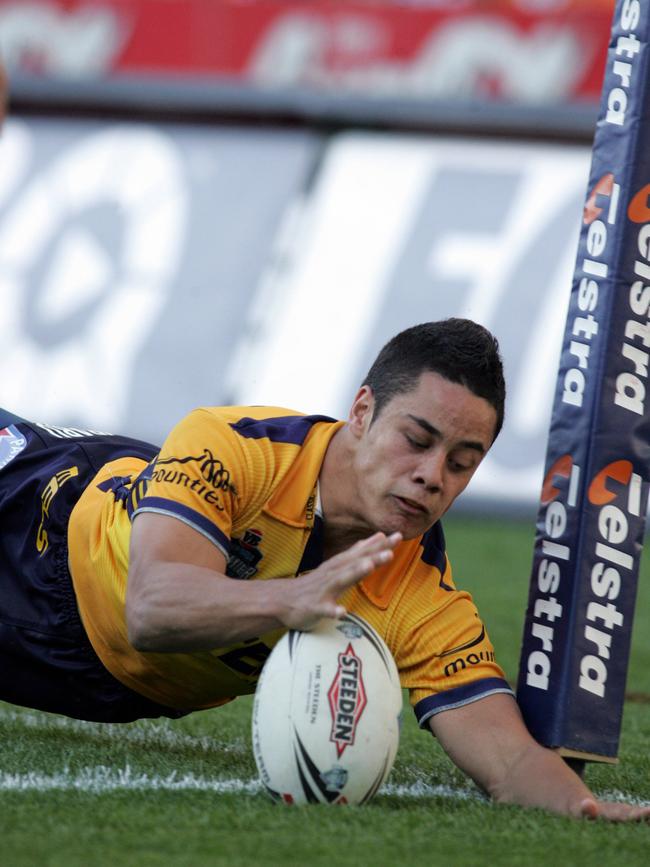
It didn’t matter – Hayne was on his way.
He made his NRL debut under Jason Taylor as an 18-year-old after Smith was sacked in 2006.
It was Taylor’s first game as head coach.
“I wanted to change some things up and that was one of the first things I did, I put him on the wing,” Taylor said.
“Everyone knew [his talent], it wasn’t just me.
“Smithy knew what a talent he was as well, he was just trying to do the right thing by him in regards to bringing him through in a controlled fashion.
“Anyone who thinks Brian Smith doesn’t know how good he was is off the mark, he was just trying to manage it in the right way.
“Brian had a lot more experience than me. I just threw him in there.”
Hayne finished the year with 17 tries in 16 games and 2006 Dally M rookie of the year honours.
Within three years, he’d be back on rugby league’s night of nights to collect the real thing – the 2009 Dally M Award for best player in the game.
A star had been born.
And standing beside him on the red carpet, was his mother Jodie.
2009: LEAGUE’S GREATEST EVER RUN
By Nick Campton
You could watch rugby league for a lifetime and never again see a player like Jarryd Hayne in 2009.
Hayne was still only 21 at the time, and plenty has happened to him across his athletic career since, but his finish to that season was the moment he went from just another of the NRL’s stars to one of the most famous sportsmen in the country.
Hayne began the season at five-eighth and struggled but after switching back to fullback, and rejuvenated by his time with Fiji in the previous season’s World Cup, he caught fire.
In the closing stages of the season Hayne won six man of the match awards in a row to win his first Dally M Medal.
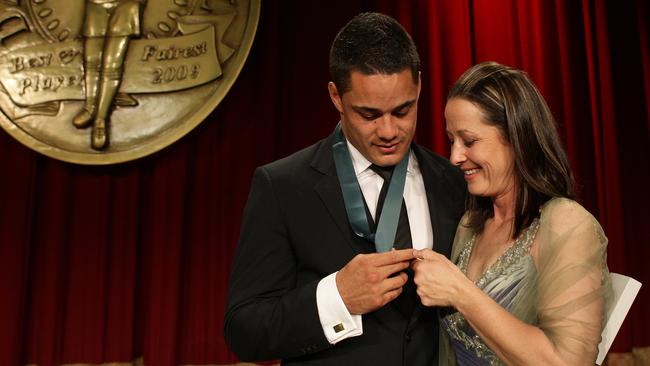
“When my name got read out I felt like crying,” Hayne said after he was given the award.
“This is the best thing that’s ever happened to me.
“My mum, my rock, the Fijian World Cup team — if I’m not in that team I’m not here. I owe it all to those guys (the Fijians). That brought me back to why I love the game so much.
“They were something I was missing — and something I thought I’d lost.”
Coach Daniel Anderson wasn’t blessed with a galaxy of stars alongside Hayne — Nathan Cayless, Nathan Hindmarsh, Fuifui Moi Moi and Luke Burt were all capable veterans, but many would have assumed their best days were behind them.
Krisnan Inu and Feleti Mateo looked like their enigmatic ways would get the better of him and force him out of the NRL, Daniel Mortimer was an unknown rookie and journeymen like Jeff Robson and Joel Reddy
But they all followed Hayne’s lead in a last ditch run to glory with their star fullback at the centre of an incredible finals charge that took them from 14th in Round 18 to a grand final match up with the Melbourne Storm.
Hayne’s supreme athleticism and unparalleled confidence in his natural game was at the heart of the revival.
In the final 14 matches of the season Hayne scored five tries, had 15 try assists, 114 tackle busts, 22 line breaks, eight line break assists and 28 offloads.
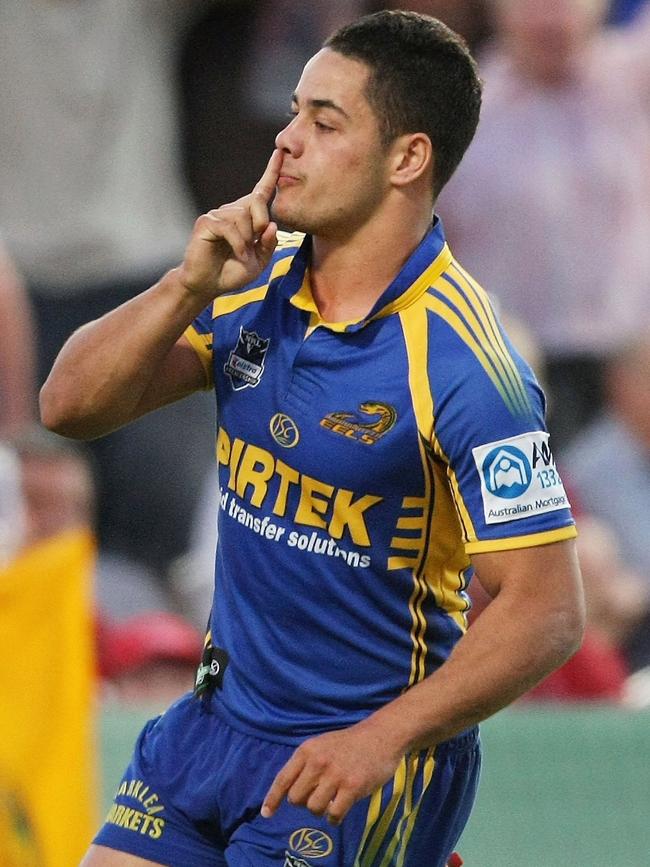
“He’s not ‘among the most natural’ … he is the most natural,” Anderson said after the club’s finals win over St George Illawarra.
“He is a footballer who has athletic ability.
“Some athletes that play the game don’t understand the nuances of the game.
“But Jarryd is aware of the ebbs and flows in a game. He is a natural footballer who makes good decisions constantly.
“Truly gifted footballers keep playing footy. They don’t second guess themselves, doubt themselves and don’t fear making errors.’’
Parramatta scored wins over premiership heavyweights like Melbourne, Brisbane and Wests Tigers, winning an epic playmaking duel with Benji Marshall in the latter before a heaving Sydney Football Stadium.
After scraping into the finals in eighth, the Eels went big-game hunting and knocked off the minor premiership-winning Dragons 25-12 at Kogarah, with Hayne scoring the final try by beating seven defenders on a 35-metre sprint to glory.
“There are few players who leave you wondering what other adjectives are there to use, and I think we have all collectively arrived at that situation with Jarryd Hayne,” Ray Warren said on commentary.
“I can’t think of any more.”
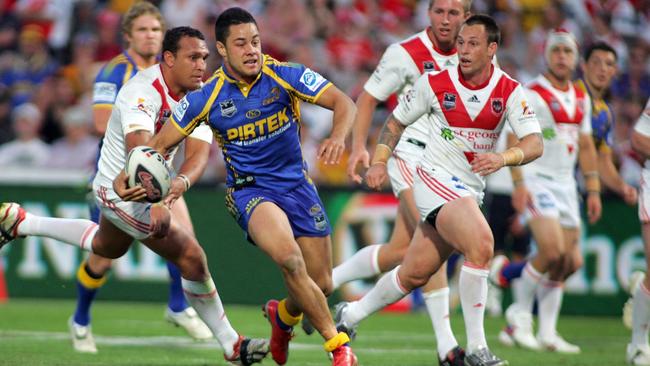
From there, the Eels knocked off the third-placed Titans before a bumper grand final qualifier against the arch rival Bulldogs.
More than 74,000 fans packed into ANZ Stadium to watch Hayne and the Eels made history, becoming the first team to make the grand final from eighth spot courtesy of a 22-12 victory.
The grand final proved to be a bridge too far, with a Melbourne side who were later proven to be over the salary cap getting home 23-16, and Hayne never played the same way again.
Given he was just 21, it seemed as though Hayne was set to become one of rugby league’s best ever players, but 2009 proved not to be the harbinger of things to come but a legend that grew in the telling that not even Hayne could live up to.
Hayne was snubbed for the Golden Boot Award that year, but won another Dally M in 2014. He remained one of the game’s biggest names until his final NRL game at the end of 2018, but it was never again like it was in 2009 — in all honesty, maybe nobody ever will be.
After all, it can’t be once in a lifetime if it happens twice.





